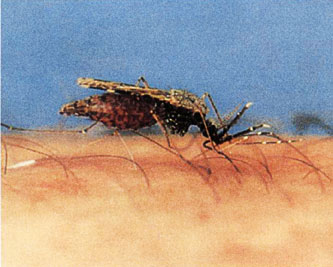BACTIVEC® Y GRISELESF®, Bio-larvicides for mosquito control
What problem does it solve?
One of the world’s main problems in controlling carriers of tropical diseases is the development of resistant populations of carriers due to the indiscriminate use of chemical insecticides. In 1992, the World Health Organisation reported resistance to chemical insecticides in 56 species of anopheles. Of these, 54 were resistant to DDT, 28 to organophosphates and 19 to insecticides derived from carbamates and pyrethroids.
As well as proving ineffective in many programmes for the control of the carriers of the above mentioned diseases, use of chemical products has been so widespread and irrational as to have become highly toxic for humans and to have reached such levels of persistence in the environment that accumulations have been found in animal and human fat.
For these reasons, and after more than three decades, the regional offices of the World Health Organization joined forces to find alternative ways of controlling carriers, especially in tropical or subtropical regions of the world, where illnesses such as malaria, human filariasis, dengue, and other arboviruses, each year affect more than 500 million people (Priest, 1992).
In Cuba, as a biological alternative for the control of larvae of disease-bearing mosquitoes, initial studies were carried out on the active ingredients of the bio-larvicides BACTIVEC® and GRISELESF® by the Cuban Academy of Sciences. Further research was carried out in the following Cuban research centres: the National Institute of Hygiene, Epidemiology and Microbiology, and the “Pedro Kourí” Tropical Medicine Institute, of the Ministry of Public Health. These technologically innovative studies on the active ingredients of BACTIVEC® and GRISELESF® led to the industrial production of the bio-larvicides in the Laboratorios Biológicos Farmacéuticos, LABIOFAM.
The National Vector Monitoring and Control Unit of the Vice Ministry of Hygiene and Epidemiology of the Cuban Public Health Ministry (MINSAP) integrated these products into programmes for the control of disease-bearing mosquitoes in 1995. Since then, they have been used throughout the country, through municipal monitoring and control units, to combat mosquitoes carrying dengue, encephalitis, human filariasis and malaria. They are also used to fight other species that cause great problems in tourist areas.








 COUNTRY OF ORIGIN
COUNTRY OF ORIGIN